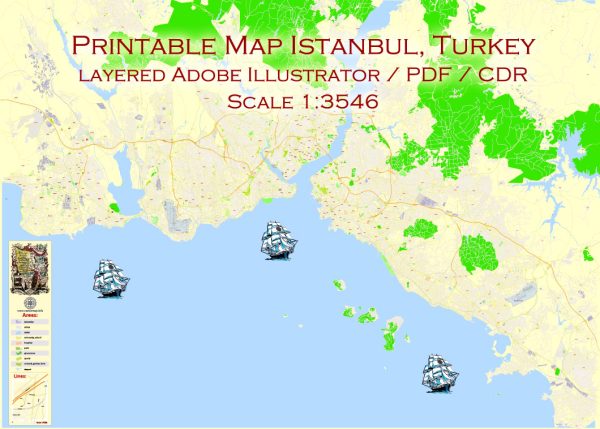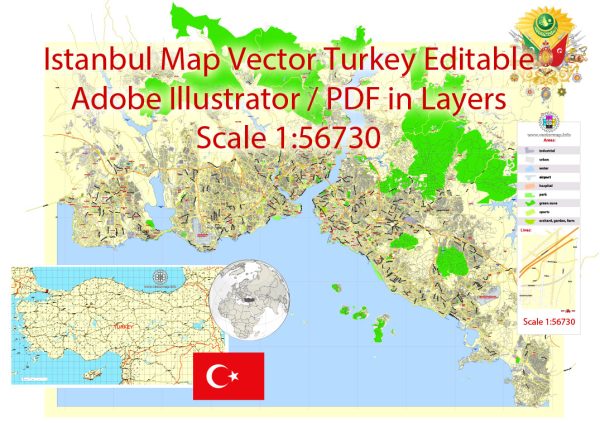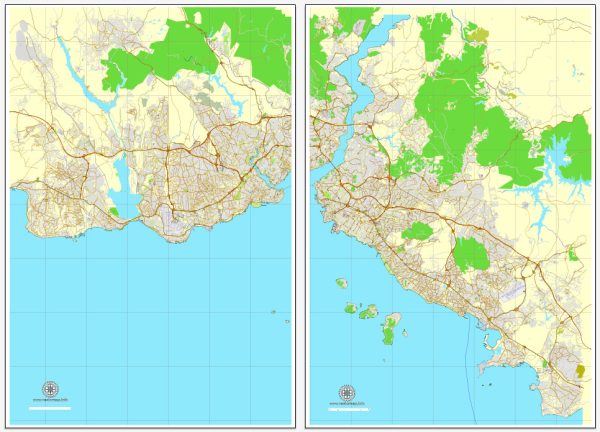Istanbul, historically known as Byzantium and later Constantinople, has a rich and diverse history of urban development that spans thousands of years. The city has been a significant center of trade, culture, and political power, serving as the capital of various empires. Here’s a brief overview of the history of urban development in Istanbul:
- Ancient Period (c. 660 BCE – 330 CE):
- Founded as Byzantium around 660 BCE, the city’s early development was influenced by its strategic location on the European and Asian sides of the Bosporus Strait, connecting the Black Sea to the Mediterranean.
- In 330 CE, Emperor Constantine the Great moved the capital of the Roman Empire to Byzantium and renamed it Constantinople. This marked the beginning of the city’s prominence as a major political and cultural hub.
- Byzantine Era (330 – 1453):
- During the Byzantine Empire, Constantinople became a center of Christianity, with the construction of impressive churches and structures such as the Hagia Sophia and the city walls.
- The city’s strategic location made it a target for invasions, and the Byzantines built extensive fortifications, including the famous Theodosian Walls.
- Ottoman Empire (1453 – 1922):
- In 1453, the Ottoman Turks, led by Mehmed II, successfully conquered Constantinople, marking the end of the Byzantine Empire. The city became the capital of the Ottoman Empire.
- Ottoman rulers, including Suleiman the Magnificent, contributed to the city’s architecture with the construction of mosques, palaces, and public buildings. The Topkapi Palace and the Blue Mosque are notable examples.
- Modernization (19th – 20th centuries):
- During the 19th century, the Ottoman Empire faced challenges from both internal strife and external pressures. The Tanzimat reforms aimed at modernizing the empire, including urban development in Istanbul.
- In the early 20th century, with the establishment of the Republic of Turkey in 1923 under Mustafa Kemal Atatürk, there was a push for further modernization. The capital was moved to Ankara, but Istanbul remained an important cultural and economic center.
- Contemporary Period (20th century – present):
- Istanbul continued to grow in the 20th century, experiencing rapid urbanization and industrialization.
- The city has faced challenges related to population growth, traffic congestion, and preserving its historical heritage while accommodating modern developments.
- Recent Urban Projects:
- In recent years, Istanbul has undergone significant urban renewal and infrastructure projects, including the construction of new bridges, tunnels, and the expansion of public transportation.
- Projects like the regeneration of historic areas, such as Beyoğlu and Karaköy, aim to preserve the city’s cultural heritage while enhancing its livability.
Throughout its history, Istanbul has been shaped by the influence of different civilizations, resulting in a unique blend of architectural styles and a vibrant cultural mosaic. The city’s status as a bridge between East and West is reflected in its diverse urban landscape and rich historical heritage.




 Author: Kirill Shrayber, Ph.D.
Author: Kirill Shrayber, Ph.D.